Abstract
Immune complexes play an important role in the pathogenesis of malaria-associated nephropathies. Two main types of lesion are demonstrable: (a) acute (transient—reversible) lesions typical of falciparum infections in man, with mild clinical symptoms developing a week or two after infection. Renal biopsies at that time show deposits of immunoglobulins, complement, and sometimes antigen. The lesions respond to antimalarials. (b) Chronic (progressive) lesions characteristic of quartan infections in man, developing slowly into a chronic stage with persistent proteinuria and gradually deteriorating renal function and hypertension. Renal biopsies at the onset of the disease show deposits of immunoglobulins, complement, and P. malariae antigens in glomerular capillary walls. Antimalarial therapy has no effect. Recent immunochemical findings confirm that these lesions are of the immune-complex type and are associated with malaria infection. However, several questions remain to be solved.
Full text
PDF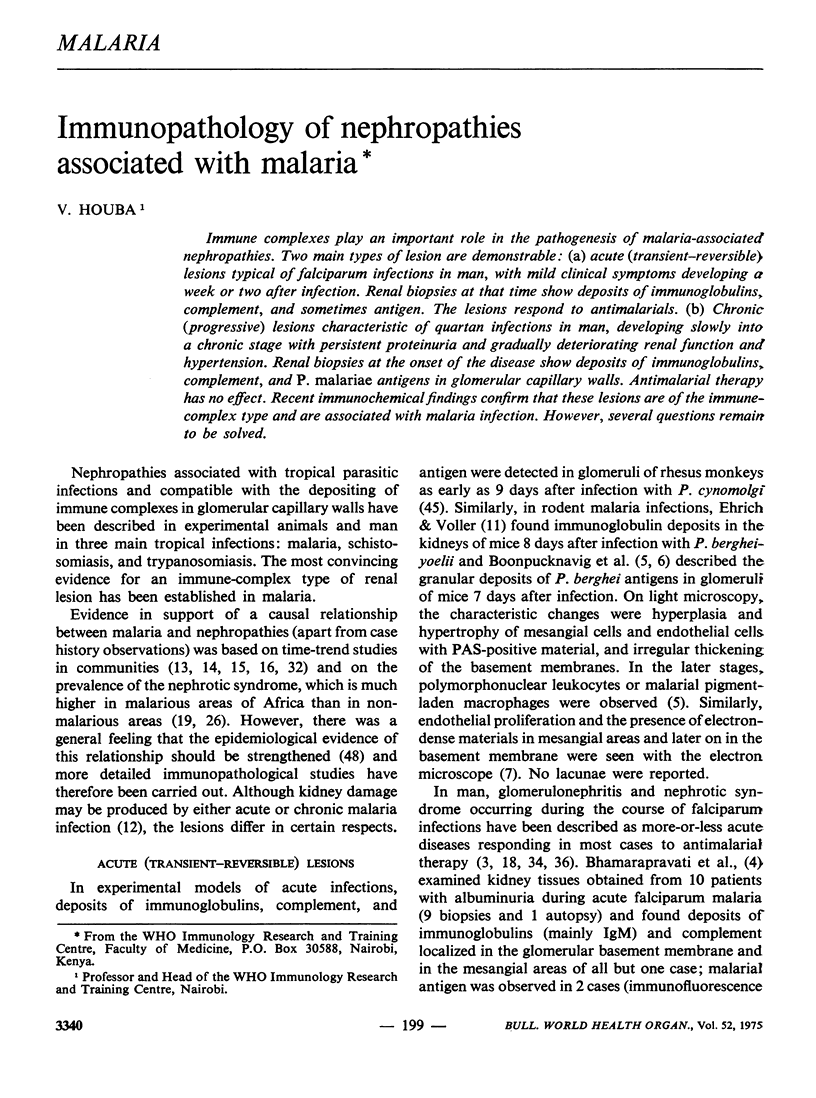
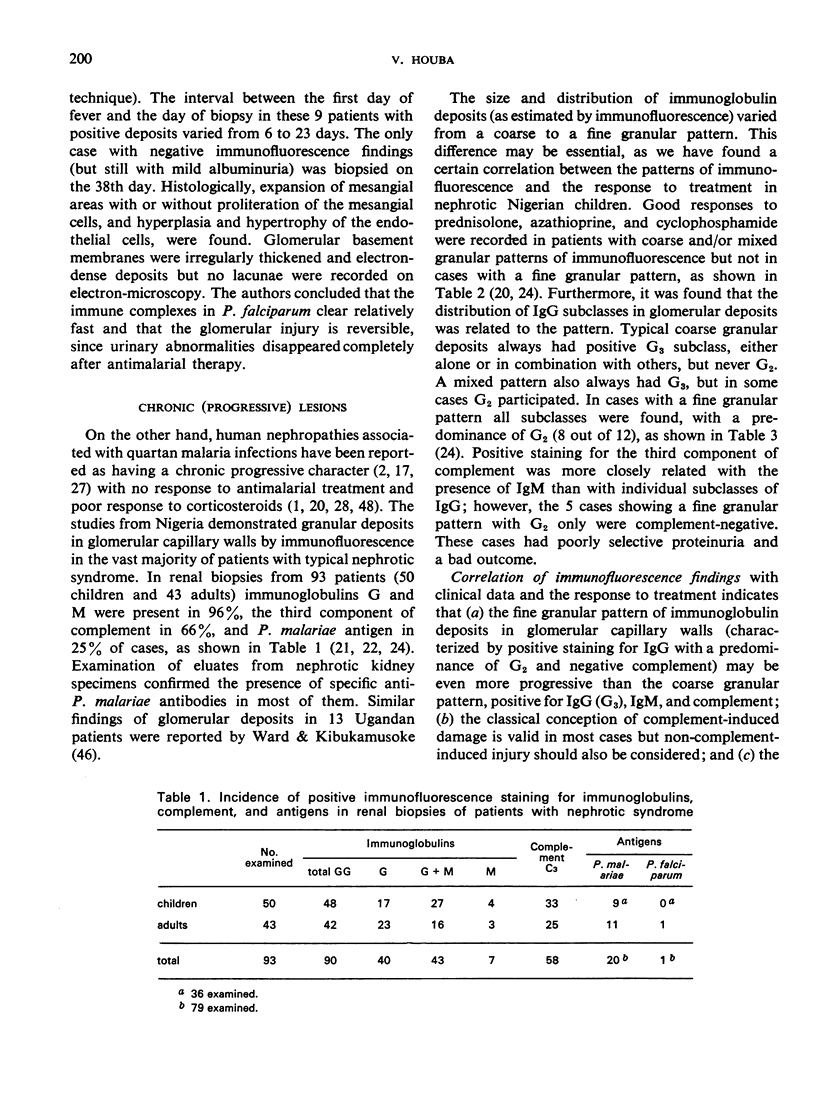
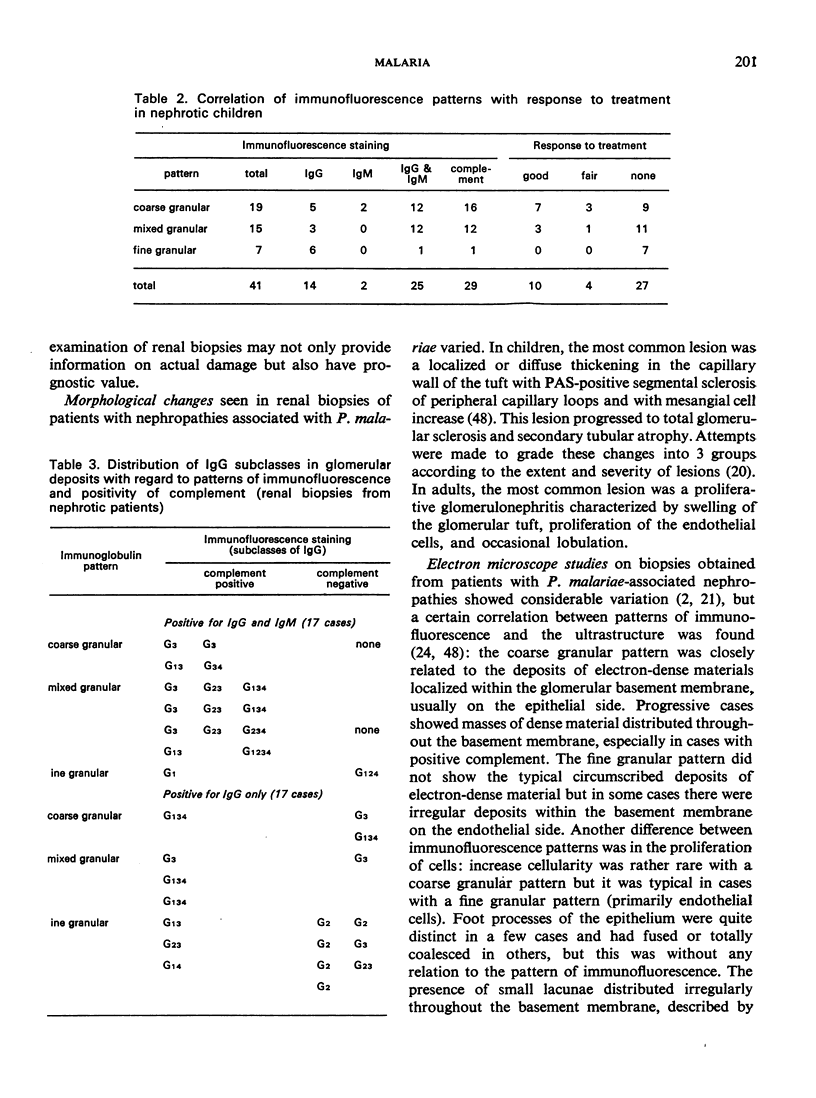
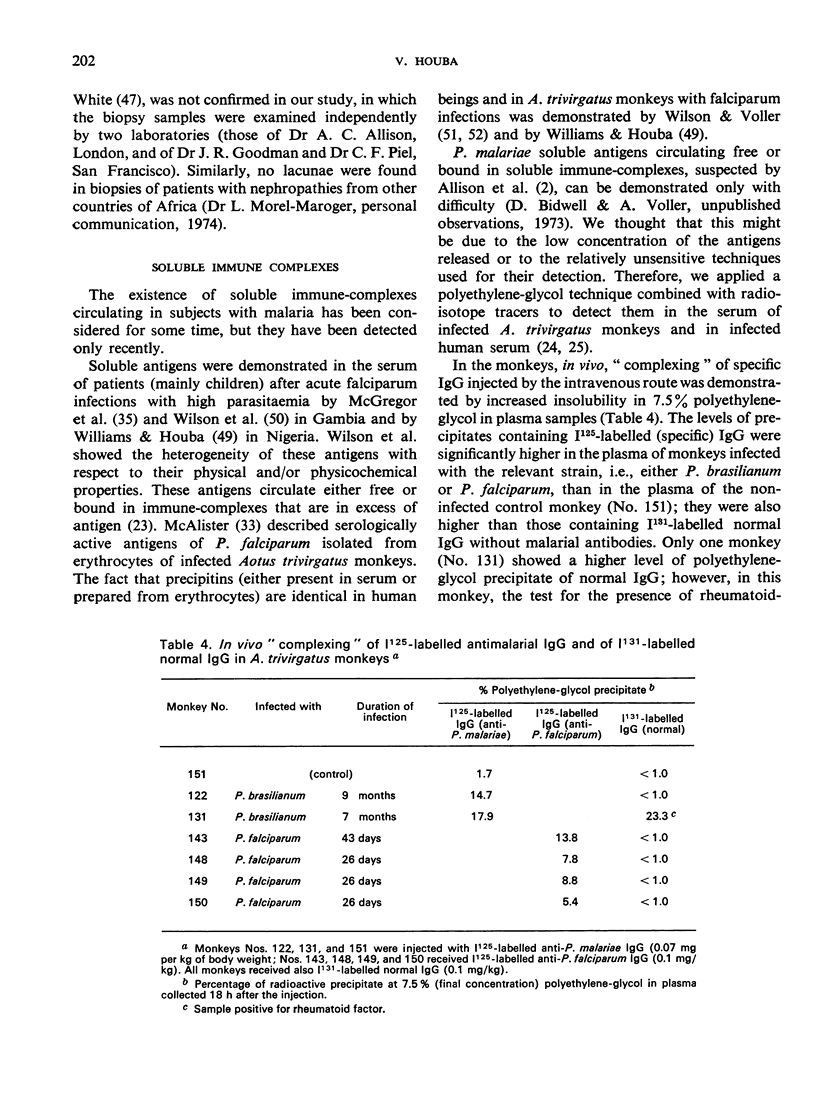
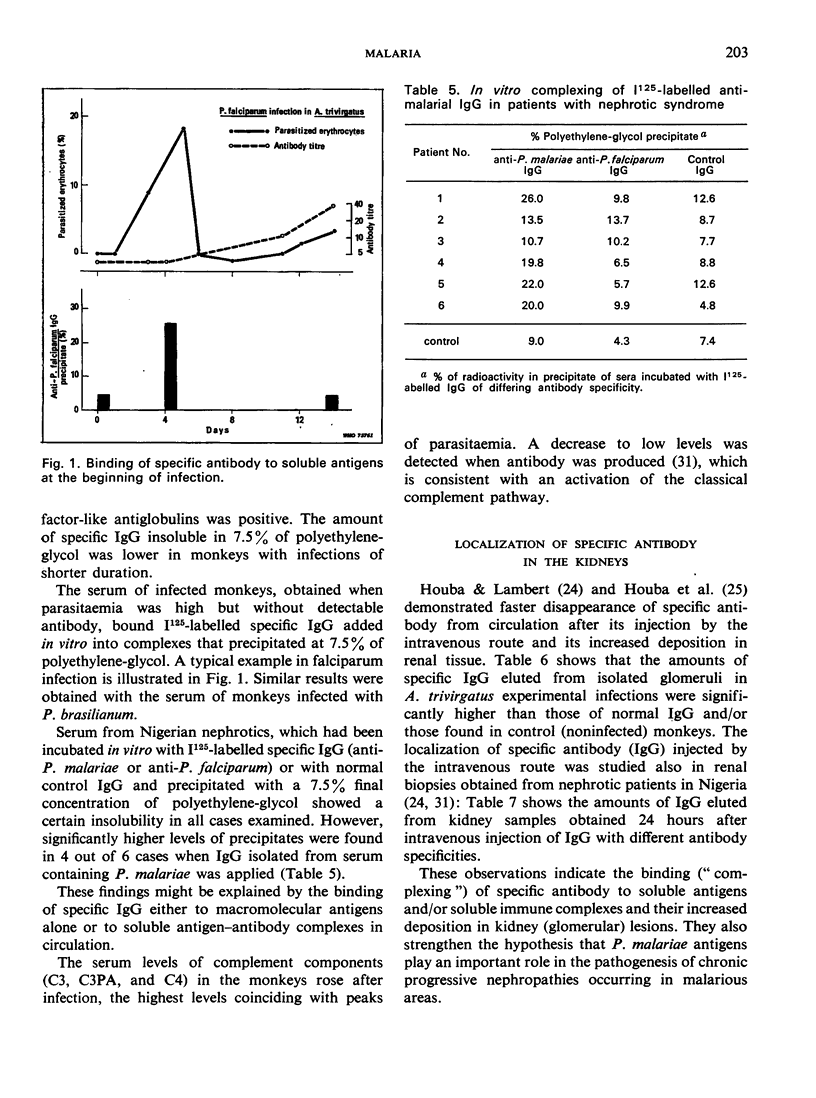
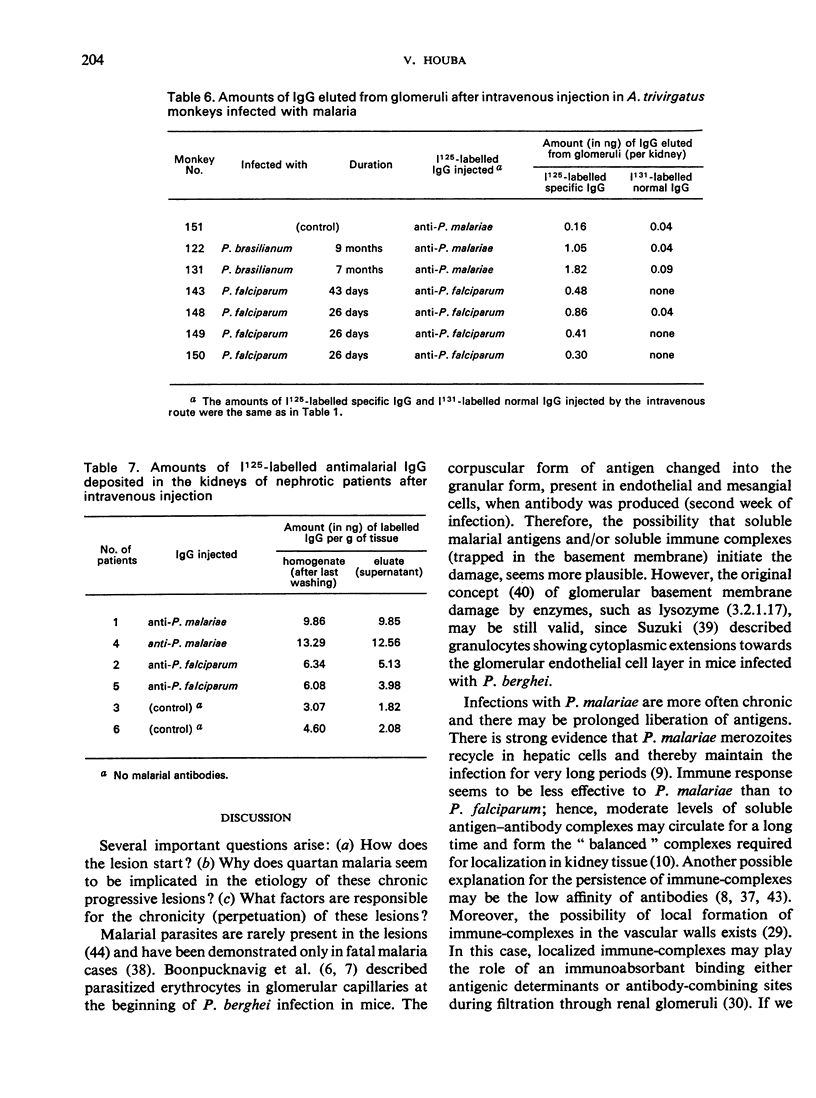
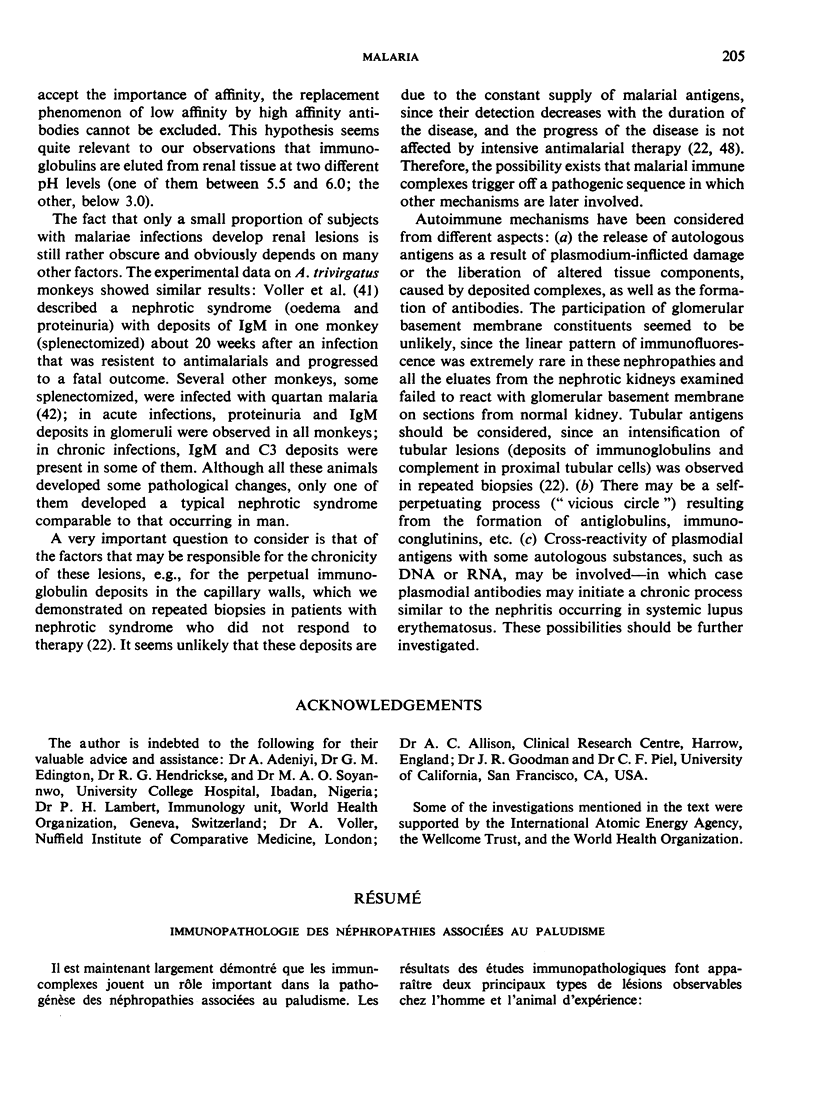
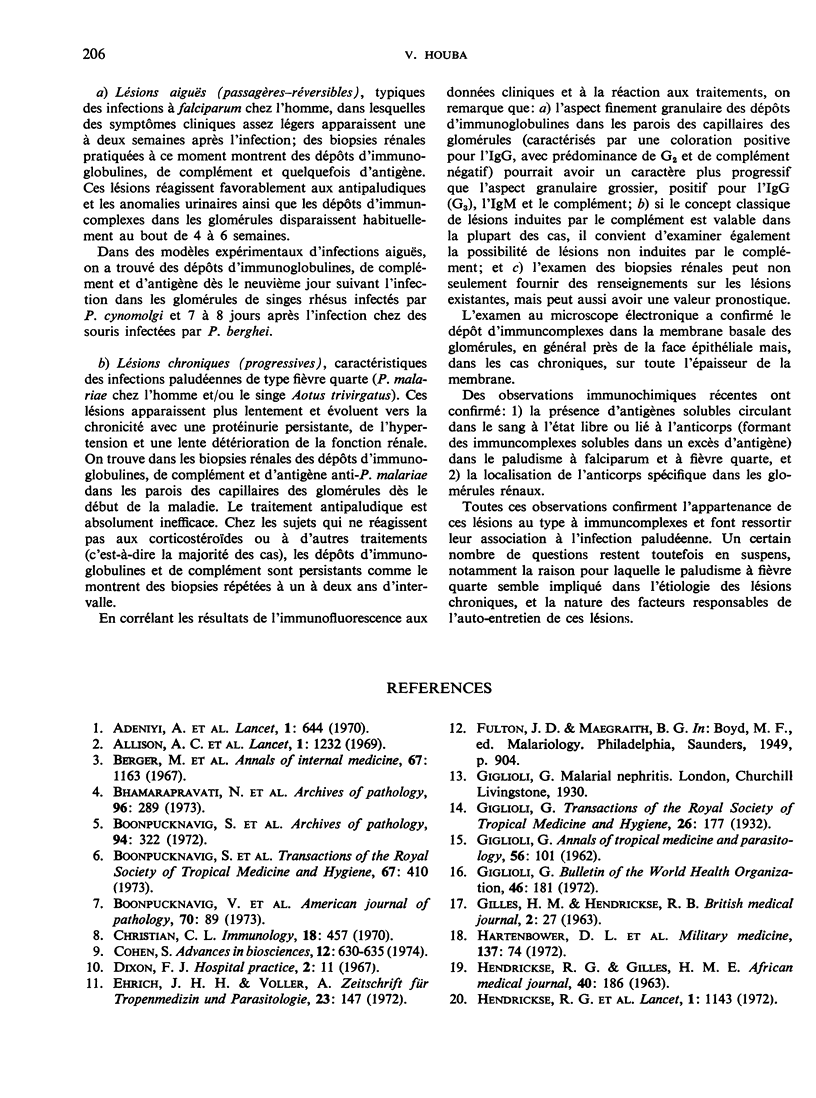
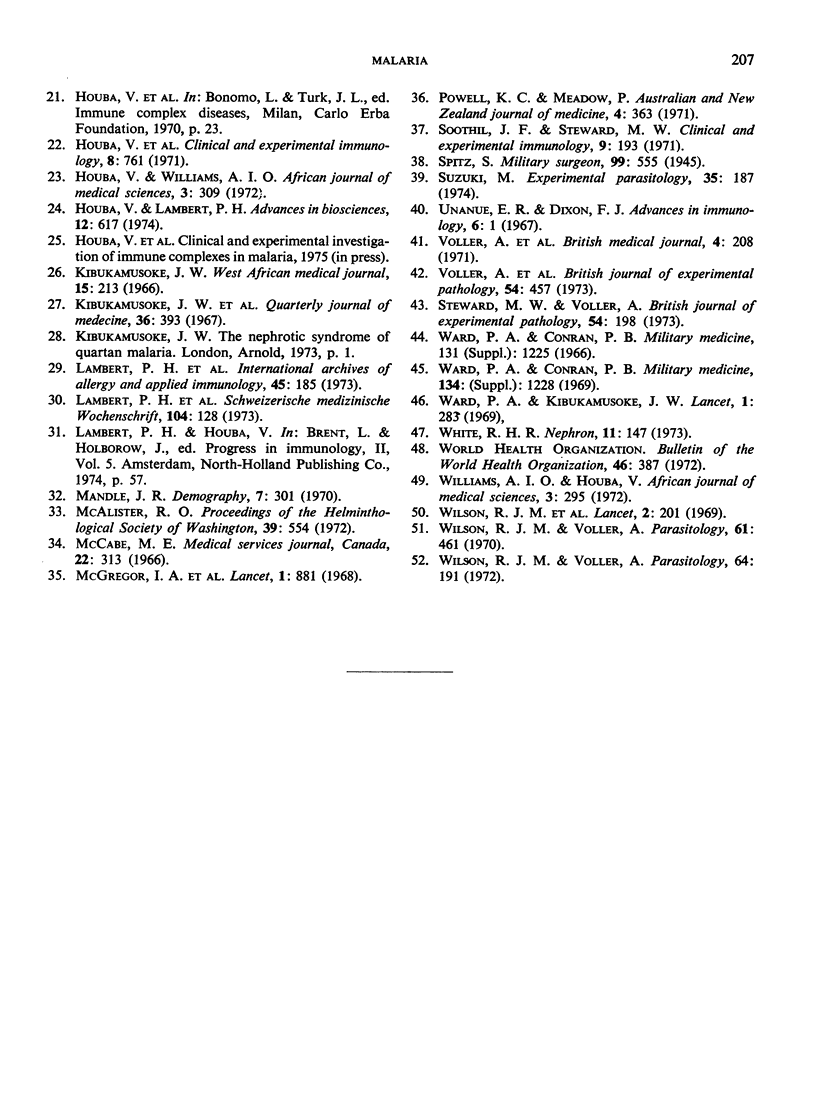
Selected References
These references are in PubMed. This may not be the complete list of references from this article.
- Allison A. C., Hendrickse R. G., Edington G. M., Houba V., De Petris S., Adeniyi A. Immune complexes in the nephrotic syndrome of African children. Lancet. 1969 Jun 21;1(7608):1232–1238. doi: 10.1016/s0140-6736(69)92116-3. [DOI] [PubMed] [Google Scholar]
- Christian C. L. Character of non-precipitating antibodies. Immunology. 1970 Apr;18(4):457–466. [PMC free article] [PubMed] [Google Scholar]
- Ehrich J. H., Voller A. Studies on the kidneys of mice infected with rodent malaria. I. Deposition of gamma-globulins in glomeruli in the early stage of the disease. Z Tropenmed Parasitol. 1972 Jun;23(2):147–152. [PubMed] [Google Scholar]
- HENDRICKSE R. G., GILLES H. M. The nephrotic syndrome and other renal diseases in children in Western Nigeria. East Afr Med J. 1963 May;40:186–201. [PubMed] [Google Scholar]
- Houba V., Williams A. I. Soluble serum antigens of P. falciparum in nigerians. II. Immunochemical studies. Afr J Med Sci. 1972 Oct;3(4):309–317. [PubMed] [Google Scholar]
- Kibukamusoke J. W. The nephrotic syndrome in Lagos, Nigeria. West Afr Med J. 1966 Dec;15(6):213–217. [PubMed] [Google Scholar]
- Mandle J. R. The decline in mortality in British Guiana, 1911-1960. Demography. 1970 Aug;7(3):301–315. [PubMed] [Google Scholar]
- Steward M. W., Voller A. The effect of malaria on the relative affinity of mouse antiprotein antibody. Br J Exp Pathol. 1973 Apr;54(2):198–202. [PMC free article] [PubMed] [Google Scholar]
- Ward P. A. Conran PB: Immunopathologic studies of simian malaria. Mil Med. 1966 Sep;131(9 Suppl):1225–1232. [PubMed] [Google Scholar]
- Ward P. A., Conran P. B. Immunopathology of renal complications in simian malaria and human quartan malaria. Mil Med. 1969 Sep;134(10):1228–1236. [PubMed] [Google Scholar]
- Ward P. A., Kibukamusoke J. W. Evidence for soluble immune complexes in the pathogenesis of the glomerulonephritis of quartan malaria. Lancet. 1969 Feb 8;1(7589):283–285. doi: 10.1016/s0140-6736(69)91038-1. [DOI] [PubMed] [Google Scholar]
- White R. H. Quartan malarial nephrotic syndrome. Nephron. 1973;11(2):147–162. doi: 10.1159/000180227. [DOI] [PubMed] [Google Scholar]
- Wilson R. J., Voller A. A comparison of malarial antigens from human and Aotus monkey blood infected with Plasmodium falciparum. Parasitology. 1972 Apr;64(2):191–195. doi: 10.1017/s0031182000029620. [DOI] [PubMed] [Google Scholar]
- Wilson R. J., Voller A. Malarial S-antigens from man and owl monkey infected with Plasmodium falciparum. Parasitology. 1970 Dec;61(3):461–464. doi: 10.1017/s0031182000041305. [DOI] [PubMed] [Google Scholar]


